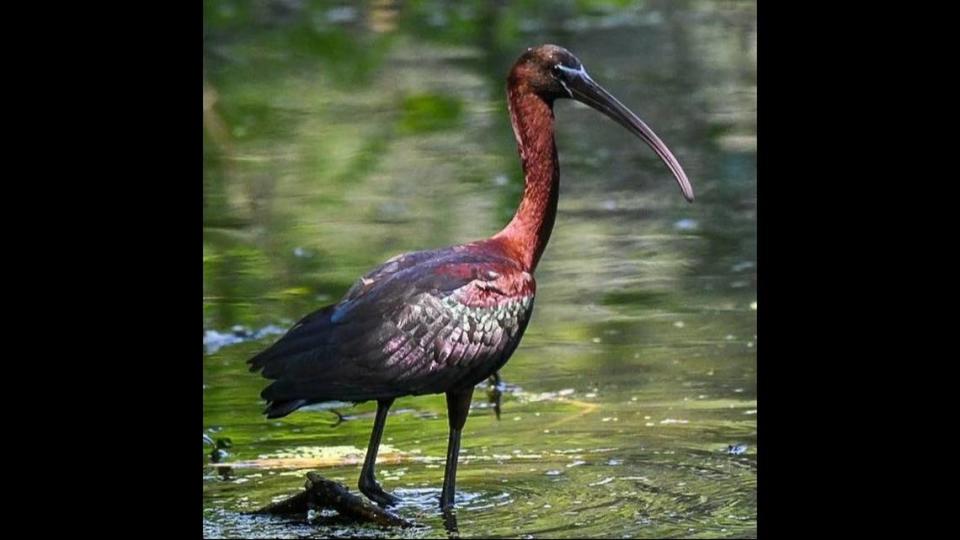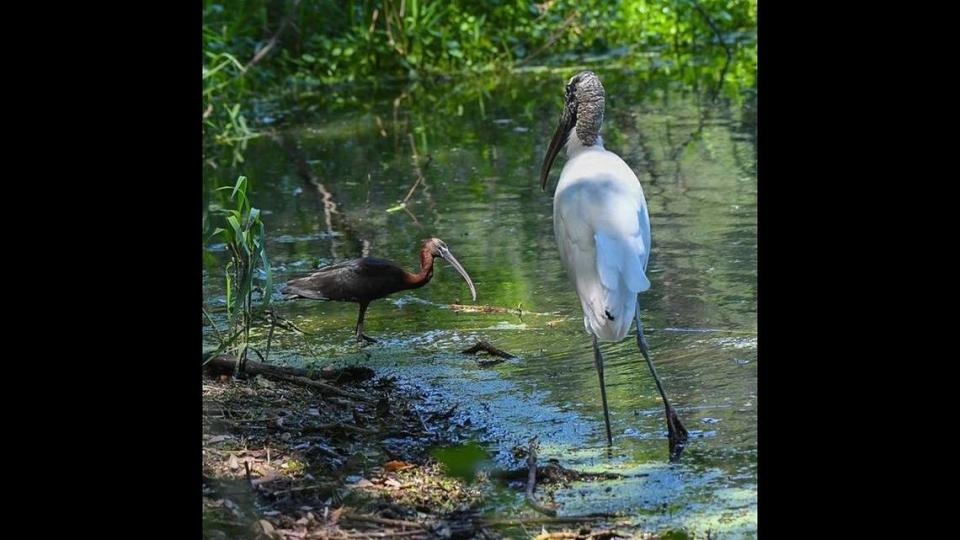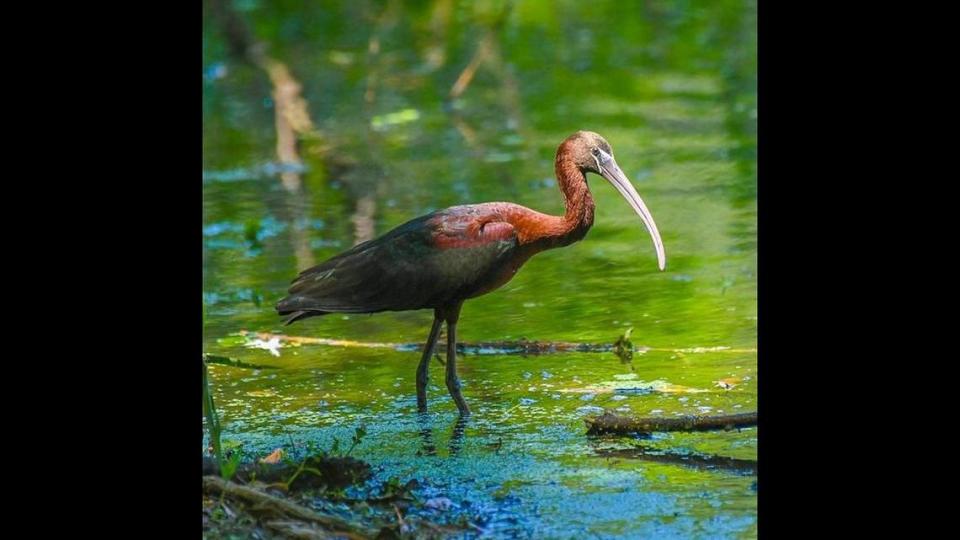Colorful bird makes rare swoop into Port Royal. ‘Am I seeing what I think I’m seeing?’
The 7-acre Cypress Wetlands in Port Royal is bird bonanza in the spring. All sorts of species congregate to nest with white ibis and great and snowy egrets tending to dominate the color palette.
But recently, a long-billed, long-legged bird whose feathers change like a kaleidoscope stole the show when it swooped into the birder’s paradise, providing a dash of color in an otherwise sea of mostly white nesting birds as a stunned local bird expert watched.
From a distance, the bird looked mostly dark, but on closer inspection, as the light illuminated its feathers, they popped with purples, deep maroons, emerald, bronze and even violet.
“It’s a real thing of beauty because their feathers are just so gorgeous,” said Jenn Clementoni, a Lowcountry master naturalist with Beaufort Birding who serves on the board of the Friends of the Cypress Wetlands. “It’s like looking at this rainbow basically on the ground.”
The party crasher was a flashy glossy ibis, a rare visitor to the local wetlands.
As birds go, glossy ibis are real lookers. The name, “glossy,” comes from their array of colors, which change depending on how the light reflects off of their feathers.
“I said, ‘Am I seeing what I think I’m seeing?” Clementoni said. “Because they don’t come to Cypress Wetlands.”
Clementoni, who says it’s been 10 years since the last glossy ibis sighting, could hardly believe it when the bird landed in the water just 15 feet away from her. After a five minute-cameo appearance that saw it poking around for food near a larger white wood stork, the outlier was airborne again. But not before Clementoni snapped photographs and reported her right-place-right-time find on Ebird, the keeper of global bird sightings maintained by the Cornell Lab of Ornithology.

The chance sighting was more big bird news at Cypress, a Mecca for bird watchers. Last year, it was learned that prehistoric-looking pairs of wood storks were nesting for the first time in the local swamp in the heart of the town of 14,000 residents. This year, 35 wood stork nests have been counted, double the number from last year. “It’s like they told their friends,” Clementoni says.
Pink roseate spoonbills, another colorful show-off, have begun showing up in recent years as well, although they are late to arrive this year.
More bird species are finding the right protection to successfully nest at the wetlands, Clementoni says.

Wood storks, glossy ibis and spoonbills are all from the same family so it’s natural to see them together, she adds.
Despite the exciting sighting, Clementoni is not expecting an influx glossy ibis at Cypress Wetlands. Although they may grab an occasional small snake, their staple foods, big snails and crayfish, are not abundant at Cypress Wetlands, Clementoni says.
“I think he just probably took a wrong turn,” she said of the brief stop by the glossy ibis.
Glossy ibis, which are common in Florida, can be seen more often in other South Carolina locations including the Savannah National Wildlife Refuge and Donnelley Wildlife Management area in Colleton County.
But they don’t breed in the state. The last time a glossy ibis was spotted at Cypress was in 2014, Clementoni said.


